©Copyright 2018 GEOSCIENCE RESEARCH INSTITUTE
11060 Campus Street • Loma Linda, California 92350 • 909-558-4548

Few things in science evoke more interest in children than dinosaurs. Books, films, toys, etc. continue to fuel kids’ interest in the very alien world of our past, yet few Christians know how to respond to their children’s curiosity in a way that is both biblically sound and scientifically accurate. Although a full discussion of the fossils in Mesozoic rocks would require several volumes, a brief synopsis is presented here along with some creationist reflections for those who are interested – parents or otherwise.
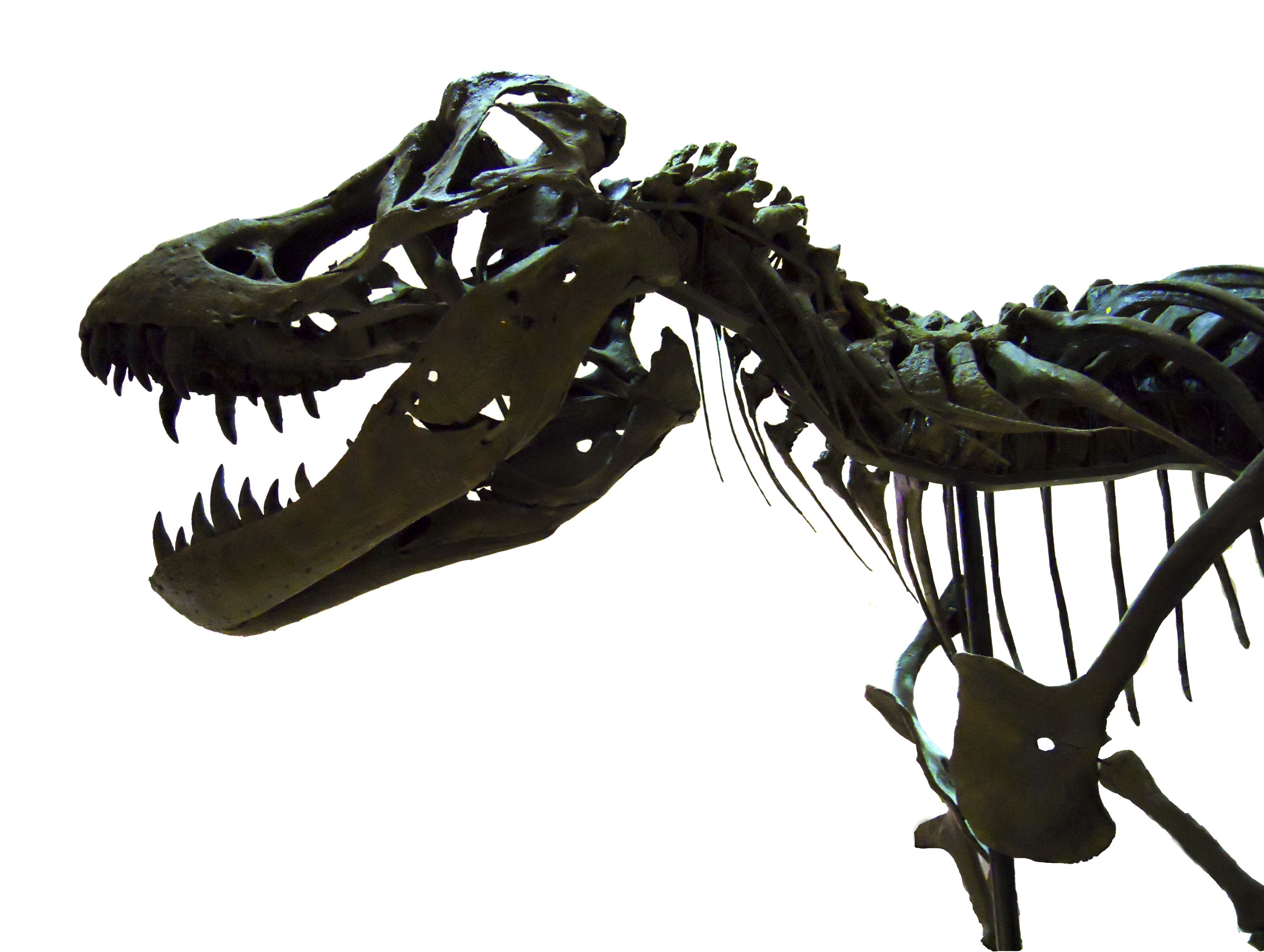
The Mesozoic (“middle life”) Erathem is composed of three systems: the Triassic, Jurassic, and Cretaceous. These Mesozoic rocks make up the middle of the Phanerozoic – the rocks containing most of the fossils we find – sandwiched between the Paleozoic (“old life”) and Cenozoic (“new life”) erathems. As is the case with the rest of the geologic column, the higher one journeys in the column, the younger the rocks are, and the more the fossils within them resemble the life in our present world.
The lowest, and therefore oldest, rocks of the Mesozoic are called the Triassic. The Triassic picks up right after the Permian, the last of the Paleozoic systems. Animal fossils change drastically across the boundary between the Permian and the Triassic, such that evolutionists refer to this as the Permo-Triassic Extinction, thought to be the largest extinction event in earth’s history. Despite the great faunal extinctions, plants go through the P/T Extinction relatively unscathed. This is an interesting phenomenon of the fossil record: plant extinctions and animal extinctions do not seem to line up as would be expected from an evolutionary perspective. Dramatic changes in the flora can be found in the middle Permian and later within the Cretaceous system. The dominant type of plants found in the Mesozoic, up until the Lower Cretaceous, are gymnosperms – plants such as conifers, gingkoes, cycads, and cycadeoids (an extinct group). In the Lower Cretaceous, however, there is an explosive radiation of a completely different type of plant: angiosperms, the flowering plants. Angiosperms dominate our ecosystems today, but they are totally absent from rocks below the Lower Cretaceous – except for some possible Triassic pollen (Hochuli and Feist-Burkhardt, 2013) and a possible Jurassic flower (Liu and Wang, 2015).
What are we to make of the absence of flowering plants – the overwhelmingly dominant form of plant today – in the Triassic and Jurassic? There is almost nowhere you can go on our earth today where you will not find angiosperm pollen. How could the past have been so different? The evolutionist suggests that angiosperms evolved during the Mesozoic from some kind of gymnosperm ancestor, but such transitional fossils are lacking, leaving the event shrouded in mystery. Perhaps, as will be discussed later, the answer lies in segregated ecosystems.
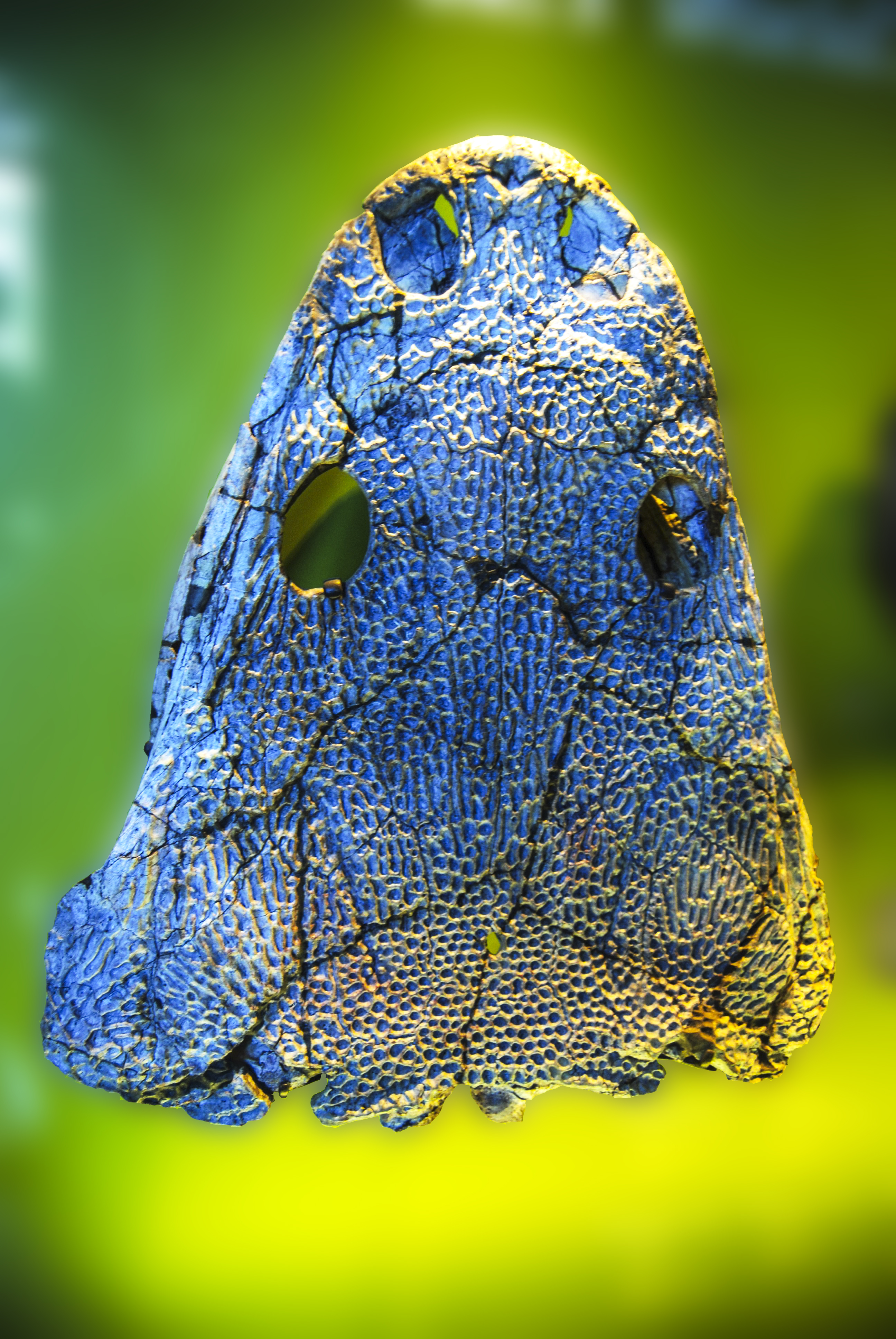
The vertebrate animals found in Lower and Middle Triassic rocks would have seemed very foreign to us were we to meet them today, although many of our familiar invertebrates are found in these rocks. There are no crocodiles before the Upper Triassic. Instead, there are crocodile-mimics called phytosaurs and stereospondyl amphibians. There are no large, herbivorous mammals to be found here like cows, sheep, antelope, or deer; rather, we see vast numbers of dicynodonts – tusked and beaked “mammal-like reptiles” – as well as sharply-beaked reptiles called rhynchosaurs. There are no dolphins, seals, or sea turtles – there are dolphin-shaped ichthyosaurs, long-necked nothosaurs, and often turtle-mimicking, clam-crushing placodonts. Instead of armadillos, there are large-reptilian tanks with upturned noses: aetosaurs. There are no birds, frogs, salamanders, or snakes to be found in these rocks.
Then, in the Upper Triassic rocks, there is a sudden change. Several groups make their presence known for the first time in these strata: crocodilians, turtles, dinosaurs, pterosaurs (“pterodactyls”), and even mammals (Bi, et al., 2014). In the Triassic, dinosaurs and dinosaur-like animals are already surprisingly diverse with small and large carnivores and herbivores of various shapes. The pterosaurs, too, are fully-formed and diverse when first found in the record. This is not what we should expect given Darwinian evolution, where a new group should evolve and increase in diversity over time. Instead, we see rapid appearances of new groups in the fossil record, already very diverse.
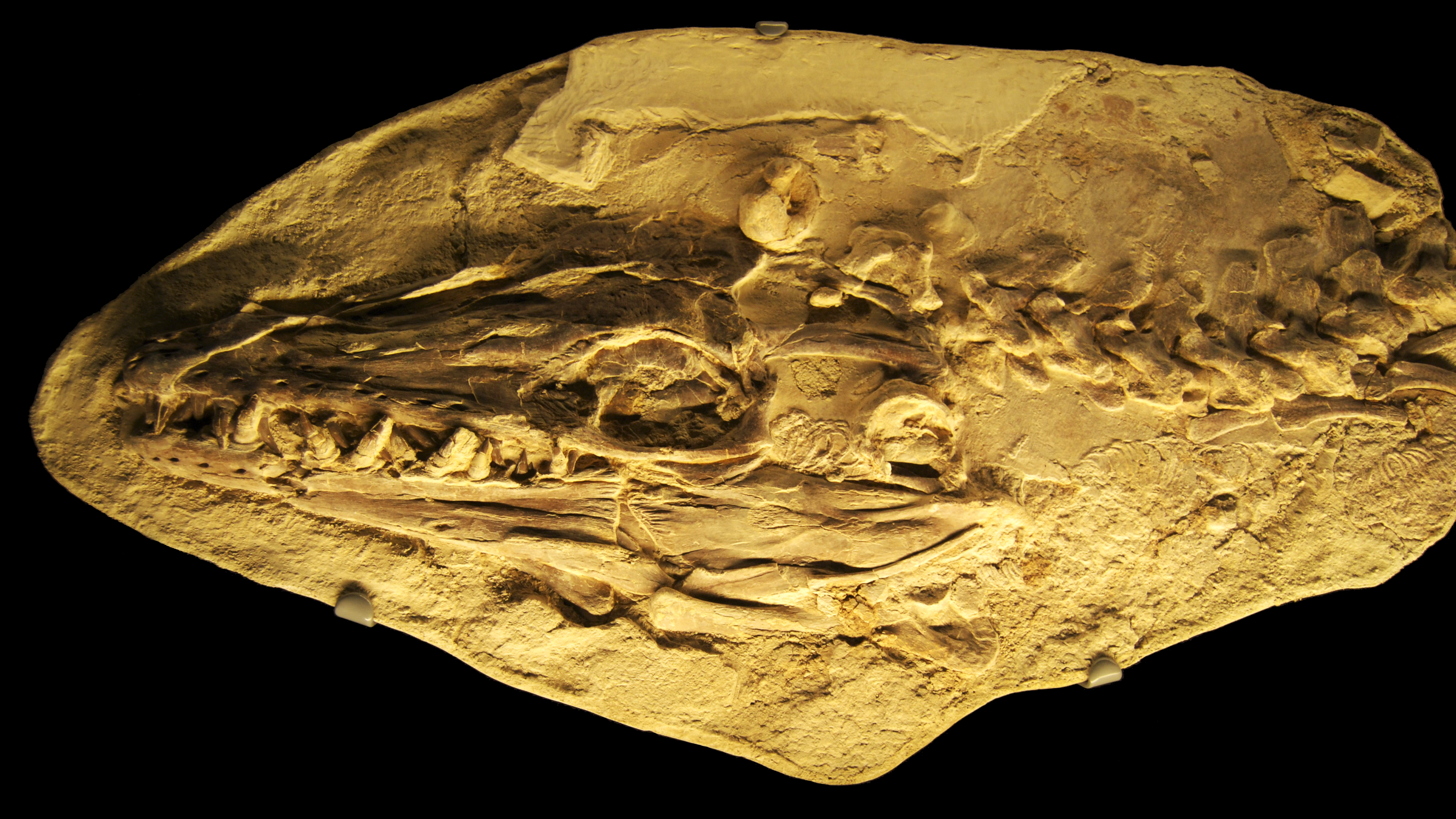
With the start of the Jurassic rocks, most of the bizarre Triassic groups mentioned in the last paragraph have disappeared, except ichthyosaurs and stereospondyls, and even more groups have appeared including lizards and modern amphibians. Dinosaurs are even more diverse in the Jurassic, and some forms get enormous. Notably, the sauropods – dinosaurs like Brachiosaurus, Apatosaurus, and Brontosaurus (now a valid genus again (Tschopp, et al., 2015)) – were the largest land animals to have ever lived, some of which reached lengths over 30 meters! Other new dinosaurs can be found in the Jurassic including armored dinosaurs like Stegosaurus and large carnivores like Allosaurus and Ceratosaurus.
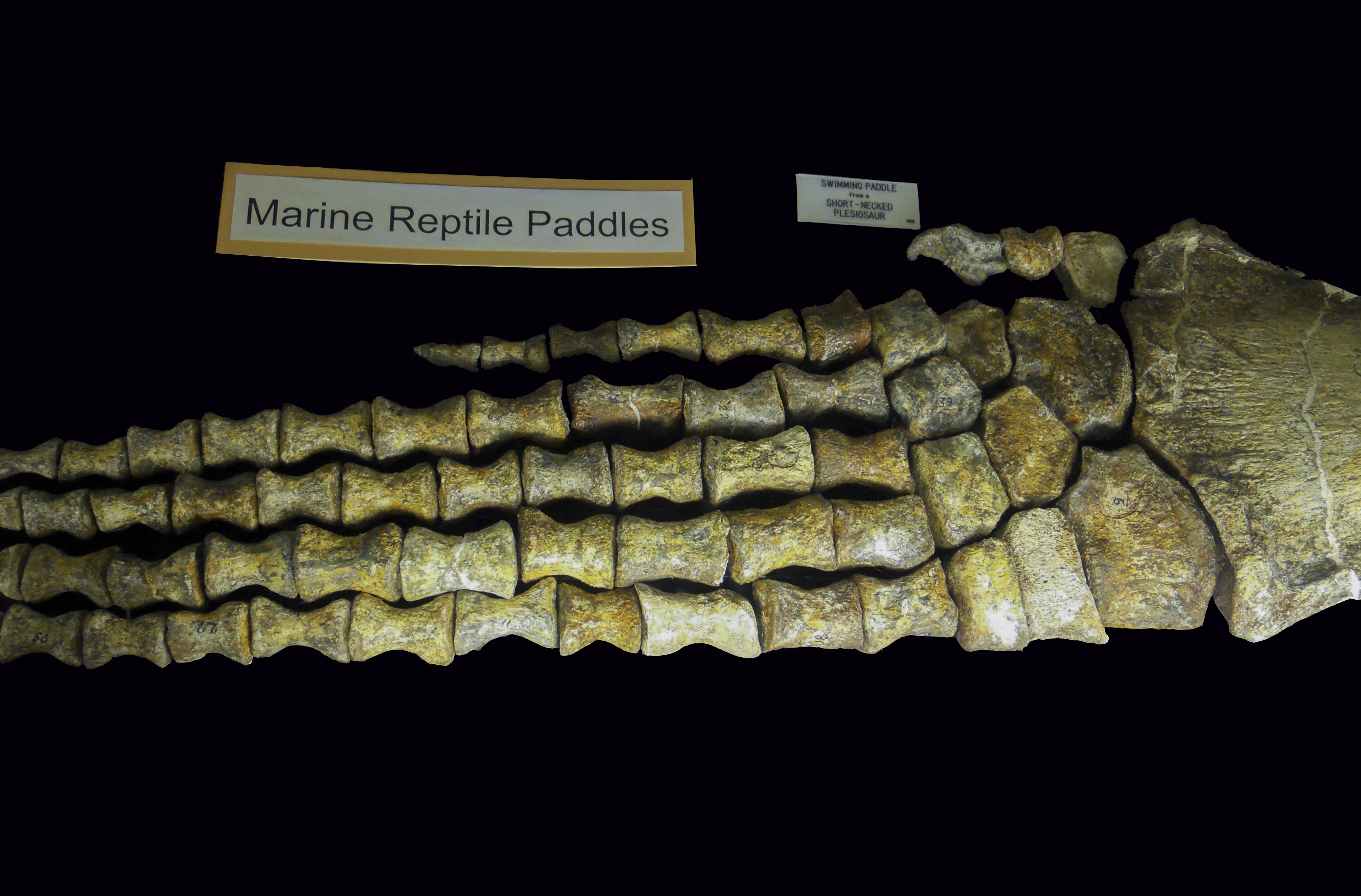
Marine rocks suggest oceans teeming with long-necked, four-flipped plesiosaurs and ammonoids with straight and coiled shells. Many new pterosaur types appear in the Upper Jurassic and Lower Cretaceous strata including the filter-feeding ctenochasmatids and the shell-crushing dsungaripterids (Witton, 2013). Notably, the first bird (although maybe not (Xu, et al., 2011; Agnolín and Novas, 2013)) in the fossil record, Archaeopteryx, is found in Middle Jurassic rocks. Although possessing the feathers expected for a bird, it also has several dinosaurian traits including a long bony tail, teeth in its jaws, and clawed hands, evidences which have been used to argue for its transitional state between theropod dinosaurs and birds. Interestingly, many of the most bird-like dinosaurs are found in Cretaceous rocks, and Archaeopteryx and its allies, Anchiornis, Xiaotingia, and Aurornis, seem to show up suddenly in the fossil record with no immediate ancestors.
Apart from the appearance of flowers, and their pollinators: bees, in the Cretaceous, this system of rocks is notable for its dinosaur diversity. Large, occasionally-bipedal herbivores like Iguanodon and the duck-billed hadrosaurs dominate Cretaceous ecosystems along with the quadrupedal horned dinosaurs including Triceratops and Centrosaurus. Rarer in the fossil record are the heavily armored ankylosaurs and the bipedal, dome-headed pachycephalosaurs. New theropod groups, including the herbivorous ground sloth-mimicking therizinosaurs, the toothless ostrich-mimics (ornithomimosaurs) and oviraptorosaurs, and the alvarezsaurs, which possessed only one finger on each hand, appear for the first time in the Cretaceous. Small, carnivorous theropods included the famous dromaeosaurs, such as Deinonychus and Velociraptor. The biggest carnivorous theropods are found in the Cretaceous: the tyrannosaurs and the southern hemisphere’s caracharodontosaurids (although Veterupristisaurus is Jurassic (Rauhut, 2011)). Pterosaurs also reached gargantuan sizes, with azhdarchids like Quetzalcoatlus reaching 10-11 meters in wingspan! Despite these enormous animals, the largest Cretaceous mammal is only the size of a Virginia opossum (Hu, et al., 2005). Birds of various kinds, including enantiornithines, are found in many Cretaceous deposits, and mosasaurs – giant, four-flippered sea serpents – dominate the oceans. The first snakes, interestingly possessing four limbs, are also found in Cretaceous rocks (Martill, et al., 2015).
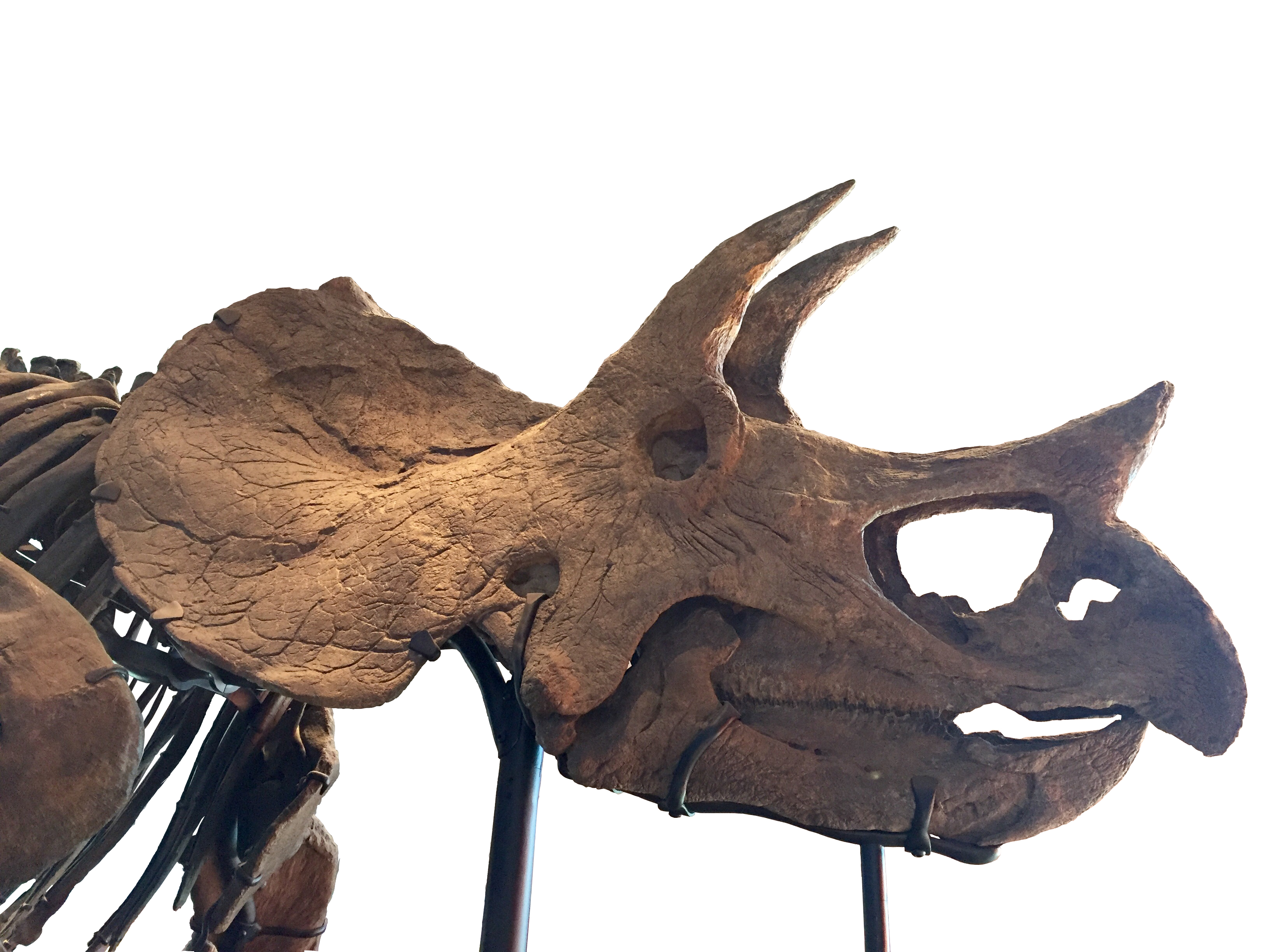
Then, with the transition from the Cretaceous to the Paleogene, it all changes. There are no ammonoid, ichthyosaur, plesiosaur, mosasaur, pterosaur, or dinosaur fossils higher than the Cretaceous. Mammals, birds, crocodiles, frogs, lizards, snakes, insects, and other animals continue to be found in Cenozoic rocks, but the absence of the others is a mystery. The most popular explanation in evolutionary circles is that a large asteroid hit the earth, killing the dinosaurs. Smaller animals, such as mammals and birds, were able to survive, whereas the large dinosaurs could not. However, this scenario is obviously too simplistic. Why would the asteroid kill ammonoids, and leave squids? Why did small dinosaurs die when birds did not?
Perhaps a better explanation is that the K-Pg boundary represents the end of Noah’s Flood. The Cenozoic, then, represents the recolonization of the earth. Certain animals: dinosaurs, pterosaurs, etc. were unable to survive in the post-Flood world, whereas others were incredibly successful. Perhaps this explains why the Triassic and other systems possess equivalents to today’s animals, rather than our modern forms. Crocodilians and phytosaurs lived in different pre-Flood ecosystems, but after the Flood, the extinction of phytosaurs allowed crocodilians to take over all kinds of compatible ecosystems. Frogs are never found in the Carboniferous or Permian, despite being a place Kermit would love to call home, because there are other animals already in the environments preserved in those systems: microsaurs, dissorophoids, and branchiosaurs. Frogs could have been restricted to certain areas before the Flood, but in the post-Flood world they would have been able to spread themselves all over the world while many other amphibian groups could not and went extinct. Instead of always taking our current world and trying to fit the past into it, maybe we need to recognize that the place outside our windows is the recovery from a worldwide catastrophe, and as such is actually not the norm for earth’s history.
References
Agnolín, F.L. and Novas, F.E. 2013. Avian ancestors. A review of the phylogenetic relationships of the theropods Unenlagiidae, Microraptoria, Anchiornis, and Scansoriopterygidae. SpringerBriefs in Earth System Sciences: 1-96.
Bi, S., Wang, Y., Guan, J., Sheng, X., and Meng, J. 2014. Three new Jurassic euharamiyidan species reinforce early divergence of mammals. Nature 514: 579-584.
Hochuli, P.A. and Feist-Burkhardt, S. 2013. Angiosperm-like pollen and Afropollis from the Middle-Triassic (Anisian) of the Gemanic Basin (Northern Switzerland). Frontiers in Plant Science 4: 344.
Hu, Y., Meng, J., Wang, Y., and Li, C. 2005. Large Mesozoic mammals fed on young dinosaurs. Nature 433: 149-152.
Liu, Z.-J. and Wang, X. 2015. A perfect flower from the Jurassic of China. Historical Biology. DOI: 10.1080/08912963.2015.1020423.
Martill, D.M., Tischlinger, H., and Longrich, N.R. 2015. A four-legged snake from the Early Cretaceous of Gondwana. Science 349(6246): 416-419.
Rauhut, O.W.M. 2011. Theropod dinosaurs from the Late Jurassic of Tendaguru (Tanzania). Special Papers in Palaeontology 86: 195-239.
Tschopp, E., Mateus, O.V., and Benson, R.B.J. 2015. A specimen-level phylogenetic analysis and taxonomic revision of Diplodocidae (Dinosauria, Sauropoda). PeerJ 3: e857.
Witton, M.P. 2013. Pterosaurs. Princeton University Press, Princeton, New Jersey.
Xu, X., You, H., Du, K., and Han, F. 2011. An Archaeopterx-like theropod from China and the origin of Avialae. Nature 475(7357): 465-470.